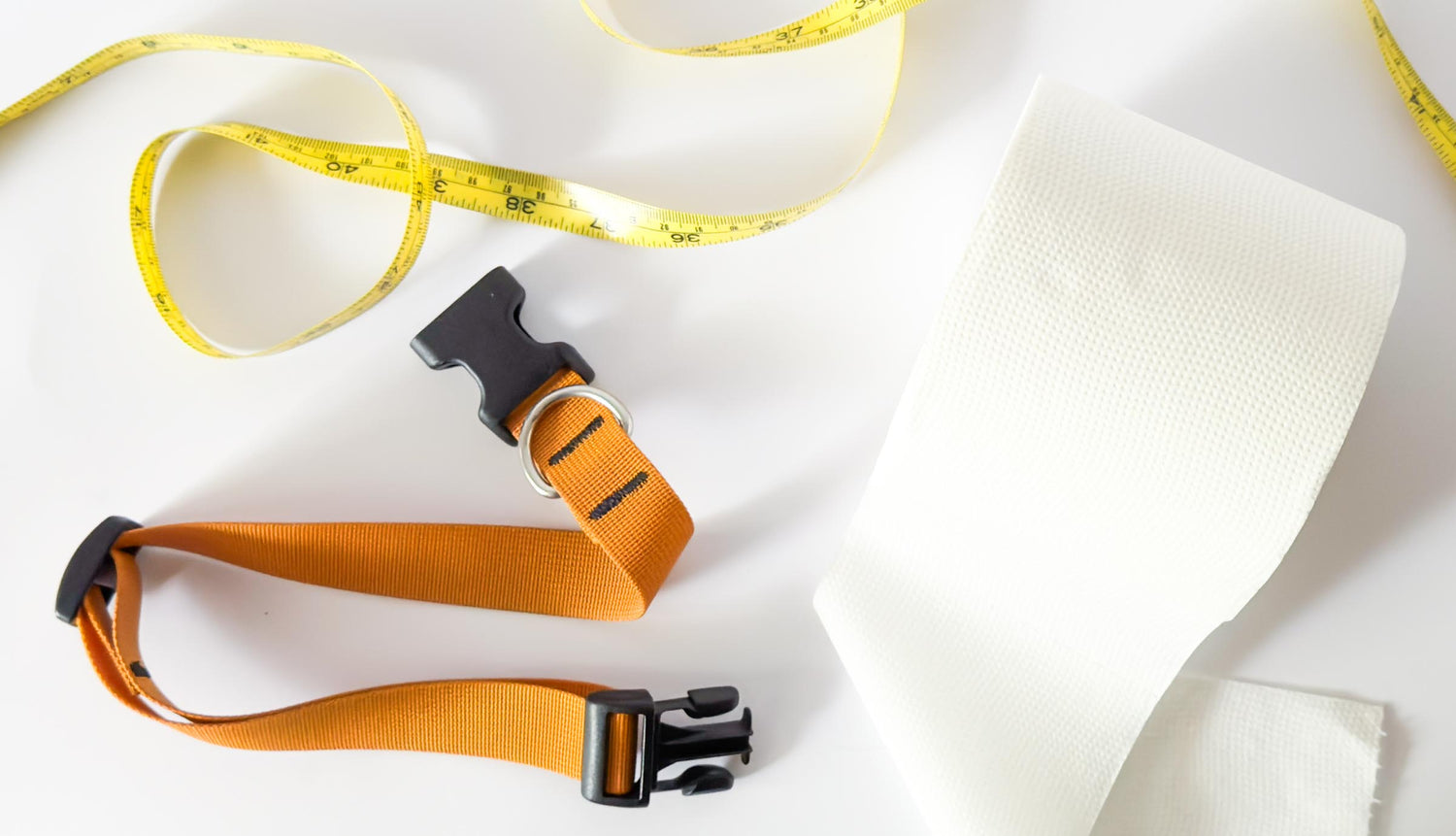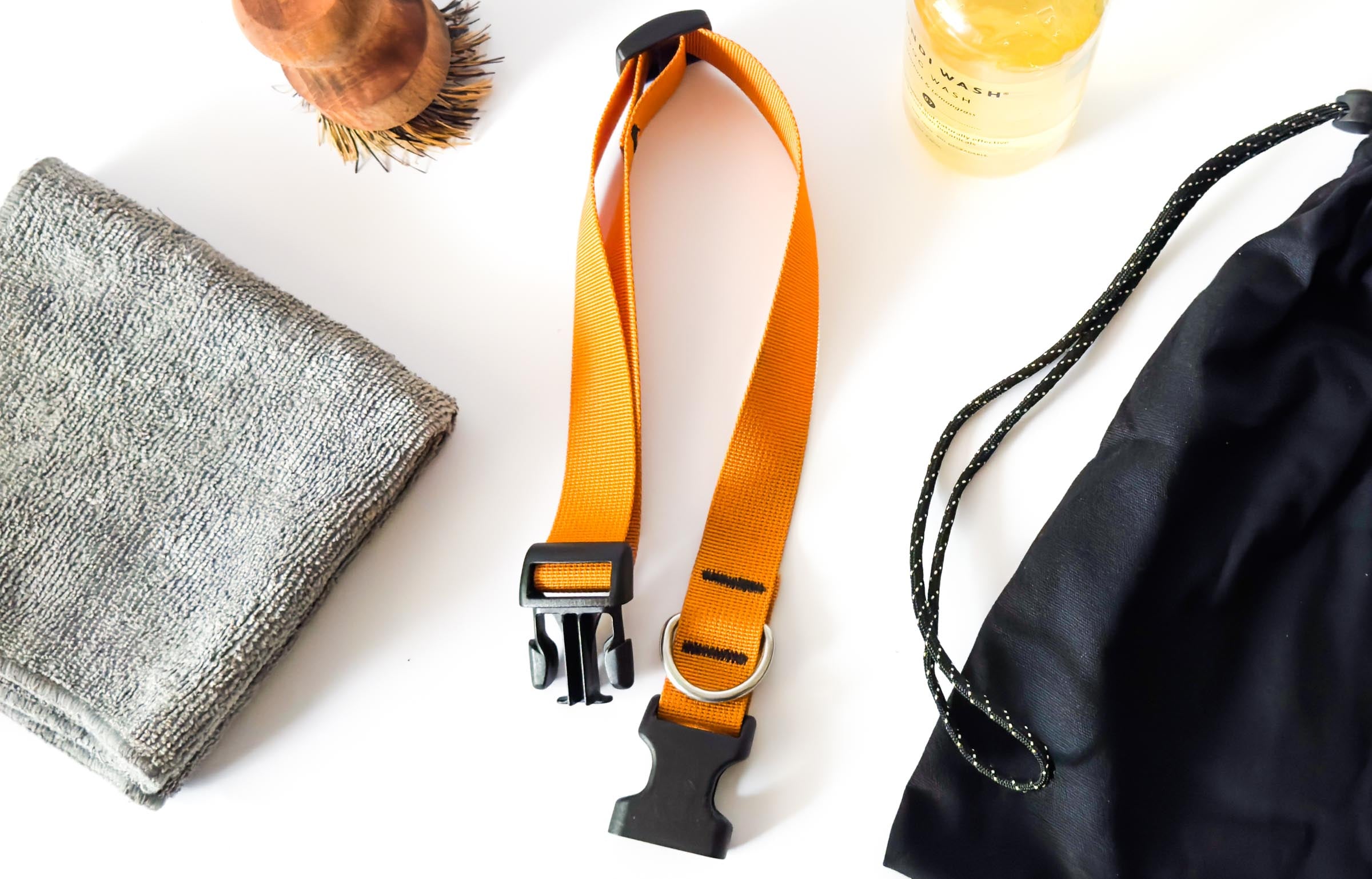Choosing the right collar for your dog is essential for their comfort and safety, but figuring out the correct size can sometimes feel tricky. While some people recommend using a dog’s weight as a guideline, this approach is often unreliable—especially since neck size can vary greatly, even among dogs of the same breed or weight. The best way to ensure a proper fit is by measuring your dog’s neck directly. This guide will walk you through the best methods to measure your dog’s collar size, including a few innovative tricks if you don't have a measuring tape or ruler handy.
Summary
- Weight isn’t a reliable guide for collar sizing—measuring your dog’s neck is best.
- Use a measuring tape or string for accurate results, with the collar sitting where it will be worn.
- For medium and large dogs, use the two-finger rule, and for smaller dogs, use one finger.
- If you don’t have a measuring tape or ruler, the toilet paper method is a creative and easy way to measure your dog’s neck.
- Martingales and head halters require a higher measurement near the jawline, while everyday collars should be measured lower on the neck.
- For new puppy owners, use a breed size guide to anticipate adult collar sizes.
How to Measure Your Dog's Collar Size?
To measure your dog’s neck accurately, always have them standing. Collars sit differently when dogs are lying down or sitting, so standing measurements are more reliable. Here are two of the most effective methods:
- Tape Measure Method: Use a soft measuring tape (like the kind used for sewing) and wrap it around your dog’s neck where the collar will sit. For everyday collars, measure lower on the neck. For training collars like martingales or head halters, measure higher up, closer to the jawline.
- For small dogs, you should be able to fit one finger between the tape and the neck, rotated sideways at the second knuckle (PIP joint).
- For medium and large dogs, the rule is two fingers, rotated sideways at the second knuckle (PIP joint).
-
String Method: If you don’t have a tape measure, use a piece of string or a non-stretchy ribbon. Wrap it around your dog’s neck in the correct position, mark where it meets, and then measure the string against a ruler or tape measure.
How to Measure Dog Collar Size Without a Measuring Tape or Ruler?
If you don’t have any measuring tools at home, the toilet paper method is a surprisingly effective alternative:
- Tear: Tear off sheets of toilet paper (each sheet is typically about 10 cm wide).
- Fold: Fold the paper lengthwise a few times to make it more durable if your dog has long fur or you’re worried about it tearing.
- Wrap: Wrap them around your dog's neck where the collar will sit.
- Count: Count the number of full sheets you use to cover the neck circumference.
- Calculate: Multiply the number of full sheets by 10 to get the neck circumference in centimetres. If only part of a sheet is used at the end, estimate the fraction (e.g., half a sheet is 5 cm or 2 inches).
This method not only gives you a surprisingly close measurement but also prevents the common mistake of pulling too tightly, ensuring a comfortable fit.
Where to Measure Dog Collar Size?
Not all collars are worn in the same position, so it’s important to measure where the collar will sit on your dog’s neck. Here’s what to keep in mind:
- Everyday Collars: These sit lower on the neck, so measure near the base of your dog’s neck, where a typical flat collar would rest. This area allows for a looser fit, ensuring your dog’s comfort throughout the day.
- Training Collars: Collars like martingales or head halters sit higher up, near the jawline. Measure this area more snugly since these collars are designed to be more secure and close-fitting.
Always measure your dog while standing to get the most accurate reading. Dogs’ necks can change shape slightly when they sit or lie down, which can lead to an inaccurate fit.
Breed-Specific Dog Collar Size Guide
For new puppy owners or those buying their first collar, knowing your dog’s potential adult size can be helpful. This guide offers a quick reference for typical neck sizes based on breed. While each dog is unique, these measurements can help you anticipate which size range your dog will fall into as they grow.
|
Breed |
Neck Size (inches) |
Neck Size (cm) |
|---|---|---|
|
Chihuahua |
8-12 inches |
20-30 cm |
|
Pomeranian |
9-12 inches |
22-30 cm |
|
Beagle |
12-18 inches |
30-45 cm |
|
Border Collie |
14-20 inches |
35-50 cm |
|
Golden Retriever |
16-24 inches |
40-60 cm |
|
Labrador Retriever |
18-24 inches |
45-60 cm |
|
German Shepherd |
18-24 inches |
45-60 cm |
|
Great Dane |
22-30 inches |
55-75 cm |
|
Saint Bernard |
26-30 inches |
66-75 cm |
This table serves as a starting point for new dog owners to understand where their dog might end up size-wise.
Conclusion
When measuring your dog for a collar, precision matters. Using simple tools like a measuring tape or even toilet paper can help you find the perfect fit, ensuring your dog’s safety and comfort. Always measure while your dog is standing and adjust for any size changes as they grow. Whether you’re sizing for an everyday collar or a training collar, using these methods will help you confidently choose the right collar for your dog.




Leave a comment
This site is protected by hCaptcha and the hCaptcha Privacy Policy and Terms of Service apply.